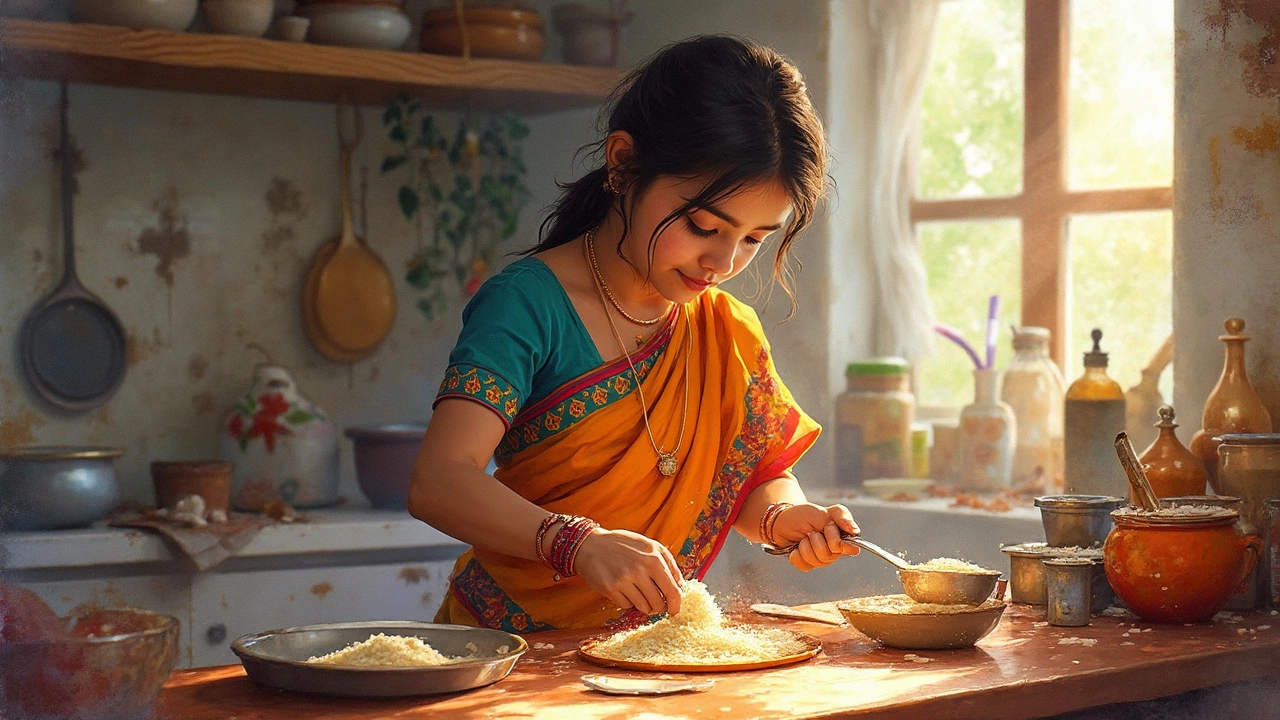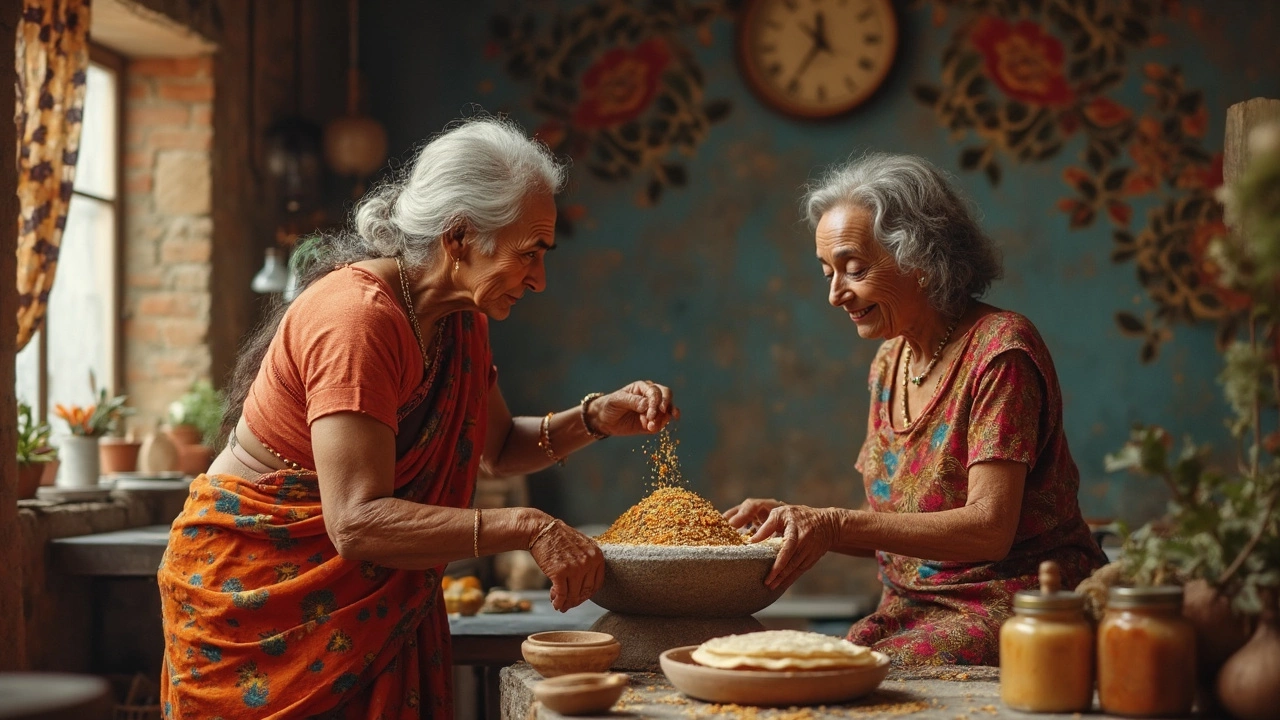Quick and Easy Dosa Batter in Less Than 4 Hours - No Yeast Needed
 Feb, 12 2025
Feb, 12 2025
Alright, so you're craving dosas, but the traditional fermentation process is a bit too time-consuming for your schedule. Don't worry; making dosa batter doesn't have to be an all-day affair. You can whip up a delicious batch in under four hours without any yeast.
The secret to speeding up the process lies in a few clever tricks. Using the right combination of rice and lentils, adding a pinch of something as simple as sugar, or even soaking the ingredients in warm water can cut down the fermentation time significantly. Jumping on the quick blend and rest approach can have you flipping dosas on your pan before you know it.
Understanding the Basics
Before jumping into the quicker methods for making dosa batter, let's get a grip on the essentials. Traditionally, dosa batter is a mix of fermented rice and urad dal (black gram lentils). The fermentation process is what gives dosas their characteristic tangy flavor and airy texture. While the usual process can take anywhere from 8 to 12 hours, there are ways to speed this up without compromising too much on taste or texture.
First things first, selecting the right ingredients matters. Typically, you'll want to go for raw rice, like sona masuri or parboiled rice, and split urad dal. The common ratio is usually 3:1 (rice to dal), but feel free to play around with it for a ratio that suits your taste. Adding a tablespoon of fenugreek seeds with rice and dal is not just for flavor—it helps in fermentation too.
Preparing Ingredients
When preparing ingredients for the quick dosa batter, soak them in warm water for a couple of hours. Warmth speeds up the soaking process. Ensure you rinse the rice and dal thoroughly before soaking to get rid of any impurities.
- Measure rice and dal in the desired ratio.
- Add a tablespoon of fenugreek seeds to the mix.
- Soak everything in warm water for about 2 hours.
The soaking ensures that the rice and dal are soft and easier to grind, leading to a smooth batter.
Quick Fermentation Hack
To replace the lengthy fermentation process, we can use some yogurt or curd in the batter. It acts as a natural fermenting agent, reducing the time significantly. Another tip is adding a pinch of sugar before mixing; it feeds the bacteria, kicking the fermentation into gear.
| Ingredient | Role in Dosa Batter |
|---|---|
| Rice | Main texture component, gives a crispy layer |
| Urad Dal | Provides smoothness and enhances fermentation |
| Fenugreek Seeds | Aids fermentation and adds flavor |
| Yogurt/Curd | Speeds up fermentation process |
The right mix and match of these tricks can help you enjoy homemade dosas quicker than you thought possible. Keep experimenting, and soon enough, you'll have a setup that works best for your taste and time constraints.
Quick Fermentation Tips
Fermentation is key to developing the authentic taste and texture of dosa batter. When you're short on time, there are a few hacks to speed things up and still get that delicious flavor.
Use Warm Water
Starting with warm water for soaking your rice and lentils is one effective trick. It helps jumpstart the process, encouraging natural bacteria to work more effectively. Aim for water that's just warm to the touch, not hot.
Add a Touch of Sugar
Another great way to quicken fermentation is by adding a teaspoon of sugar into your batter. Sugar acts as food for the bacteria, boosting activity which, in turn, speeds up the fermentation process.
Set in a Warm Environment
The warmer the environment, the faster you'll see results. Place your batter in a warm spot in your kitchen. You could even put it in your oven (turned off!), with just the light on, to create a cozy fermentation station.
Grind Batter Smoothly
A smooth batter ensures even fermentation. Using a high-speed blender helps achieve that perfect consistency quickly. A good grind also allows for better incorporation and speeds up the fermentation process.
If you're into homemade dosa and quick results, play around with small adjustments in conditions, and always keep an eye on the batter's activity. It's all about finding the right balance and environment for your specific setup. Follow these tips, and you’ll never be out of a quick dosa option again.

Grinding Techniques
Making the perfect dosa batter starts with correctly grinding the ingredients. It's not just about smashing rice and lentils together; it's about doing it right to get that authentic taste and texture.
Choosing the Right Equipment
You don't need a fancy wet grinder to make good dosas. A high-quality blender can do the trick if used correctly. The key is to blend at the right settings to avoid overheating the mixture, which can alter the taste of your batter. If using a blender, pulse it a few times, mix with a spatula, and then pulse again. This ensures even grinding.
Achieving the Right Consistency
Now, here's where it gets crucial. You want a smooth batter—not too thick, not too runny. Aim for a consistency similar to heavy cream. Add water gradually while grinding to control this. It typically takes about 2 to 3 cups of water depending on your ingredients and equipment, but always start slow. Trust your instincts!
Remember, the ultimate goal is to get a batter where you can pick some up with a ladle, and it flows back like a silk scarf unfurling.
Understanding Grinding Ratios
Going with the tried-and-true method, the rice to lentil ratio should be about 3:1. When it comes to making quick dosa batter, using idli rice or parboiled rice enhances fermentation and texture. As for lentils, urad dal is the champion here.
A Quick Duration Tip
Grinding time contributes to the heat produced. Ideally, complete the grinding in about 10-15 minutes. Any more, and you risk warming things up too much, which again might affect fermentation.
Cooking Perfect Dosas
Alright, your batter is ready, and now it's time to work some magic on the pan! Getting the dosa just right can be a bit of a dance, but with a few tricks up your sleeve, you'll nail it in no time.
Heat Up That Pan
First things first: make sure your pan is properly heated. It should be hot, but not smoking. You can test the heat by sprinkling a few drops of water on the surface. If they sizzle and evaporate quickly, you're good to go.
Spreading the Batter
Pour a ladleful of your quick dosa batter onto the center of the pan. Using the back of the ladle, spread it out in a circular motion moving outward. Aim for a thin layer, just like a crepe. The thinner the spread, the crispier your dosa will turn out.
Cooking Time
Drizzle a bit of oil or ghee around the edges of the dosa to add that rich flavor and crisp texture. Let it cook on medium heat until the edges start to lift from the pan. This usually takes about 2-3 minutes.
Flipping Like a Pro
Well, here's the good news: you generally don’t flip dosas. But if you want to cook both sides, make sure the batter is set and then gently flip it over. Cook for another minute and you are all set!
Serving Suggestions
Once your dosa is crispy and golden, gently lift it off the pan and serve it with chutney, sambar, or any of your favorite sides. It’s versatile—experiment with different fillings like potato masala, or cheese if you're feeling adventurous!
And there you have it, homemade dosas quicker than you thought possible. Remember, practice makes perfect, so keep trying until you’re a dosa master!